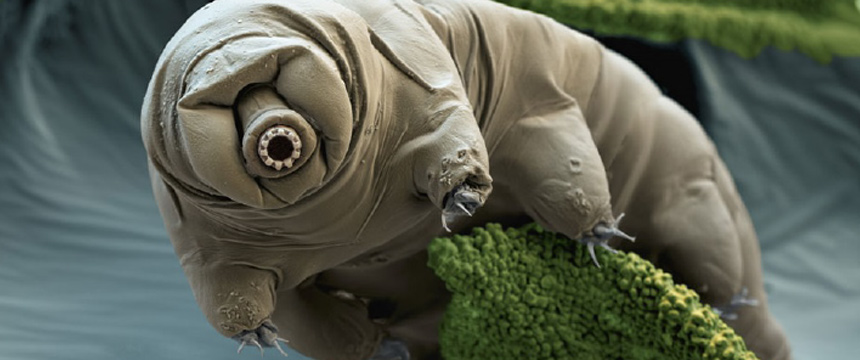
Principles of Physiology – Life at the Extremes
BIOL 3103.001
Eli Bridge, Oklahoma Biological Survey
Rosemary Knapp, Dept. of Biology
In 1929, Nobel Laureate August Krogh, wrote in The American Journal of Physiology, “For such a large number of problems there will be some animal of choice or a few such animals on which it can be most conveniently studied.” This idea has come to be known as the Krogh Principle and it is a guiding light for the study of physiology. If we want to understand or illustrate a physiological principle, we do well to study organisms for which the principle lies at the forefront of the species’ existence. More often than not, these exemplary organisms live in extreme environments that present significant challenges to survival. In fact, many of the fundamental principles of physiology were discovered or extended by investigating such organisms. From kangaroo rats in Death Valley to Weddell seals in Antarctica, animals that cope with extreme conditions teach us about the physiological constraints and capacities that apply to all complex organisms, including humans. This course will exploit Krogh’s Principle by using animals from extreme environments to demonstrate the physiological principles that allow organisms to sustain themselves in the face of adverse conditions. We will first take students to the far corners of the Earth to help them understand the biochemical and physiological mechanisms that permit life in the harshest places on the planet. We will then expand the scope of the course beyond the planet Earth, and ask students to apply the course concepts to issues such as human survival during space travel and potential forms of extraterrestrial life.
Public Lecture Series
The Department of Biology presents a public lecture series in conjunction with the Presidential Dream Course. Presentations are free and open to the public. For information or accommodation to events on the basis of disability, contact Eli Bridge, ebridge@ou.edu or at 405-325-4034.
Insane in the Methane: How Extreme Microbes Eat and Excrete
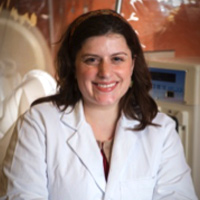
Thursday, September 3, 2015
7:00 p.m.
Sam Noble Museum of Natural History,
Kerr Auditorium (Room 105 A)
Jennifer Glass
Assistant Professor, Georgia Institute of Technology
Dr. Jennifer Glass graduated from the University of Washington in 2006 with a bachelors degree in Oceanography and in Earth and Space Sciences. Her Ph.D in Geological Sciences is from Arizona State University. As an undergraduate, Dr. Glass read about the biological communities surrounding deep sea vents and set her sights on studying these communities in greater detail. In 2011 she achieved this goal as part of NASA’s Astrobiology Post-doctoral Program, working in Victoria Orphan’s lab at the California Institute of Technology. On her first day as a postdoc, Glass boarded the Research Vessel Atlantis on a scientific expedition off of Oregon’s coast. Using the Remotely Operated Vehicle Jason, Glass and her colleagues made several exciting discoveries among microbes and sediments from the sea floor. Among them was a new microbial enzyme that seems to use the trace metal tungsten instead of molybdenum, the metal more commonly found in cold seep environments.
Dr. Glass is now an assistant professor of geomicrobiology & geochemistry in the School of Earth and Atmospheric Sciences at Georgia Tech. Her current research interests include marine microbiology, anaerobic oxidation of methane, environmental controls on greenhouse gas cycling, and co-evolution of microbial metabolisms and ocean chemistry over Earth’s history. In addition to her previous work on deep sea vents, Dr. Glass has expanded her scope to include the deep, dark waters of Indonesia’s Lake Matanko. There Glass hopes to document the activities of lithotrophic microbes that live on the methane and iron deposits that have built up over thousands of years.
webpage: Jennifer Glass
Immunology of the American Alligator: From Marsh to Medicine
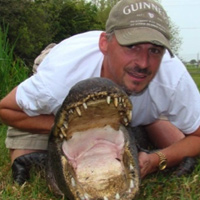
Thursday, October 22, 2015
6:00 p.m.
Physical Sciences Center (Room 201)
Mark Merchant
Professor of Chemistry, McNeese State University
Dr. Merchant is known as “the alligator guy” at McNeese State University, where he teaches biochemistry. His research interests are primarily focused on the innate immune systems of crocodilians. He seeks to understand the biochemical mechanisms that allow crocodilians to withstand severe injuries and heal very rapidly, despite the fact that they live in aquatic environments with an abundance of potentially infectious microbes. His research has taken him to field projects in Australia, Brazil, Argentina, and Gabon, Africa. He is currently expanding his work to include modern DNA expression methods as a means of identifying immunologically-significant genes. Dr. Merchants work is also contributing to the discovery of new antibiotics based on the biochemistry of crocodilian immune systems.
webpage: Mark Merchant
On a Wild Goose Chase for the World's Highest Flying Bird
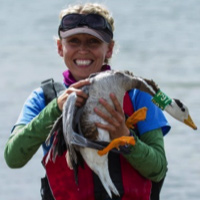
Wednesday, November 11, 2015
7:00 p.m.
Sam Noble Museum of Natural History,
Kerr Auditorium (Room 105 A)
Lucy Hawkes
Lecturer in Physiological Ecology, University of Exeter
Dr. Hawkes graduated from the University of Plymouth (UK) in 2001 with a B.S. in Marine Biology and Coastal Ecology. After completing an undergraduate internship in North Carolina, Lucy worked for 2 years as the sea turtle program coordinator for Bald Head Island Conservancy. Lucy's research there centered on the nesting ecology of the loggerhead sea turtle, including satellite telemetry of the post nesting migratory movements of turtles from North Carolina.
In 2007 Dr. Hawes obtained a PhD in Biological Sciences at the University of Exeter. She now works there as a lecturer and physiological ecologist. Her research work focuses on the costs and drivers of migration in vertebrates, and exploits several emergent technologies for field based research, including satellite telemetry, heart rate logging, accelerometry, and metabolic rate monitors. She combines data from these devices with spatial ecology, remote sensing, and respirometry to make empirical measurements that help explain how the amazing migratory performances of birds and other animals are accomplished given fundamental physical and physiological limits. Her work has also investigated the impact of external forcing factors, such as climate change and disease ecology on migration and breeding ecology.
webpage: Lucy Hawkes
Surviving an Upper Atmospheric Supersonic Bailout from Near Space
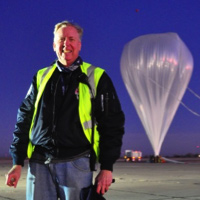
Wednesday, December 2, 2015
4:30 p.m.
Physical Sciences Center (Room 201)
Jonathan Clark
Associate Professor, Baylor College of Medicine
Dr. Jonathan Clark is an Associate Professor of Neurology at the Baylor College of Medicine in Houston, TX, where he teaches operational space medicine at BCM's Center for Space Medicine. Dr. Clark’s background is an interesting mix of service, scholarship and high adventure. He began his career with the U.S. Navy, where over the course of 26 years, he headed the Spatial Orientation Systems Department at the Naval Aerospace Medical Research Laboratory in Pensacola; the Aeromedical Department at the Marine Aviation Weapons and Tactics Squadron One in Yuma, Arizona; and the Neurology Division and Hyperbaric Medicine at the Naval Aerospace Medical Institute. He then joined NASA and was a six-time Space Shuttle crew surgeon who served in top roles at Johnson Space Center. More recently, he served as Medical director of the Red Bull STRATOS project.
Dr. Clark’s research concerns the logistics of medical procedures conducted during space flight, and seeks new ways to test these procedures using animal models. The subject matter of his work ranges from zero-gravity anesthesia to avoiding toxic radiation exposure. Meanwhile, Dr. Clark maintains his qualifications as a Naval flight officer, Naval flight surgeon, Navy diver, and Special Forces freefall parachutist.
webpage: Jonathan Clark
Lecture Title TBA
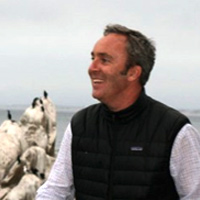
Wednesday, December 9, 2015
4:30 p.m.
Physical Sciences Center (Room 201)
Christopher Lowe
Assistant Professor, Stanford University
Dr. Lowe received his BSc in Biology from the University of Sussex. He then moved to the USA to take up a position as a graduate student at SUNY Stony Brook, in the lab of Greg Wray, to study echinoderm body patterning. Following his PhD he received a Miller Postdoctoral fellowship from UC Berkeley to pursue his interests in the evolution of deuterostomes and the origins of chordates. In collaboration with John Gerhart from Berkeley and Marc Kirschner from Harvard, he established the hemichordate Saccoglossus kowalevskii as a new developmental model species. In 2004 he started his own lab in the Department of Organismal Biology and Anatomy at The University of Chicago as an Assistant Professor, and in 2009 he moved to Stanford University and is currently an Associate Professor in Biology based at Hopkins Marine Station.
Dr. Lowe is currently continuing his studies of evolution of the deuterostomes. This major metazoan lineage is made up of four major groups; chordates, echinoderms, hemichordates, and Xenoturbellida . The early evolutionary history of the deuterostomes remains poorly understood and surprisingly even the evolutionary origins of our own phylum, the chordates, remains a major puzzle for zoologists. The work in Dr. Lowe’s Lab attempts to make some headway in this area, and has focused on investigating the role of developmental genes that underlie these divergent body plans and morphologies in hemichordates and echinoderms. He continues to exploit Saccoglossus kowalevskii as a means of establishing the earliest, and most fundamental aspects of the molecular genetic networks that were involved in early brain evolution. This approach should not only help elucidate the early patterning events leading to chordate brain evolution, but also will be generally informative about how conserved regulatory networks can generate such amazing neuroanatomical diversity during animal evolution. Dr Lowe’s research has earned fellowships from both the Miller Institute for Basic Research and the Searle Scholars Program as well as funding from NASA’s astrobiology program.
webpage: Christopher Lowe

